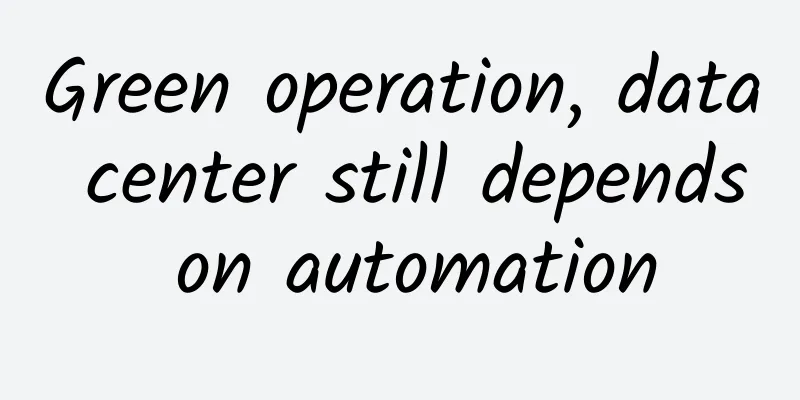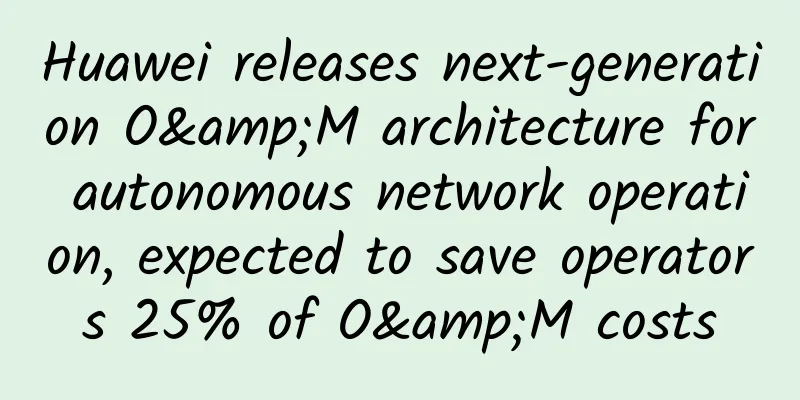First release | The creator of the low-code concept has proposed a new development paradigm

|
The advent of the cloud-native era has brought unprecedented opportunities to the developer community, allowing developers to focus more on business value creation and innovation, and making it possible for everyone to become a developer. How can developers transform themselves into cloud-native developers? How can professionals such as operations and maintenance avoid being marginalized in the cloud-native era? Alibaba Cloud commissioned Forrester to conduct a study on the Chinese developer community and provide the answer. The sudden outbreak of the COVID-19 pandemic did not hinder the process of enterprises moving to the cloud. Instead, it greatly promoted the large-scale implementation of cloud-native technologies through enterprises' emphasis on digital transformation. From the rise of container technologies represented by Docker to the rapid development of Kubernetes (K8s), in the endless pursuit of performance, efficiency, portability, manageability, and convenience, cloud-native technologies not only provide new value to enterprises, but also enable developers to have more powerful tools and new application construction and innovative thinking. A developer's changing times Enterprises are undergoing a comprehensive transformation from the information age to the digital age. In this process, the status and role of developers are also changing: the composition of developers has changed from the original group represented by traditional developers to the gradually emerging cloud developer group, and then to the growing cloud native developer group. Not only that, the mission of developers themselves has also changed from the former executor of enterprise information strategy to the current digital transformation business enabler, and in the future they will further become the technology leader of digital innovation. Three historical development stages of Chinese developers Driven by market and technological development, the development and construction of enterprise applications will eventually move towards cloud native. At the same time, the maturity of cloud native development platforms will in turn drive more enterprises to become cloud native enterprises, and cloud native applications will become the core competitiveness of enterprises. Therefore, the cloud native development model will also become an inevitable choice for enterprise application development. Applications based on cloud-native architecture are designed based on the characteristics of the cloud throughout the entire software life cycle, from architecture design, development methods to deployment and operation and maintenance. The elasticity, distribution, self-service, and on-demand advantages of the cloud platform are maximized, making enterprises gradually choose cloud-native as the first choice for application construction. At the same time, for the vast number of developers, cloud-native technology brings important value to developers in different fields: Empower developers with cutting-edge cloud computing technologies and differentiate their personal technical competitiveness. The evolving cloud-native full-stack technology brings developers new resources, assets, and architectural perspectives, allowing developers to more fully master the technical methods, tools, and best practices for modernizing the cloud computing technology stack, and achieve vertical improvement and innovation of their own technical capabilities. With the foundation of cloud-native technology, full cloud practice is not only the ultimate goal of enterprise application construction, but also the only way for application developers. According to Forrester's forecast, in 2021, the number of developers who frequently use serverless frameworks will increase by 31.6%, and the number of developers who frequently use containers will increase by 27.3%. Challenges faced by developers Faced with the stringent requirements brought about by the rapid development of technology, increasing customer experience needs, and a highly competitive market environment, developers are required to continuously break through the original thinking of application construction and delivery, and help their companies to create the ultimate customer experience in a more agile and efficient way to retain and attract more customers. Enterprise digital business competition requires application development, testing, and operation and maintenance to have faster iteration speeds and more flexible agility. The speed of business launch has been shortened from weekly to hourly levels; the monthly online business volume has increased from "dozens/month" to "hundreds/day." Faced with the ever-increasing application construction, delivery, and iteration needs of enterprises, developers are inevitably anxious in many aspects in the face of such changes: On the one hand, developers are anxious about improving their technical capabilities due to the rapid development of technology, and need to constantly update their understanding of architecture, development languages, and various technology stacks; Developers should use cloud-native technology and cloud-native development models to update their own technical systems and comprehensive quality capabilities to improve their adaptability to meet challenges. Not only that, by embracing cloud-native technology, developers can also achieve career breakthroughs and transform into other fields. For example, the transformation of operation and maintenance personnel to developers is also a general trend. Finally, developers should also be aware that the evolution of cloud-native technology provides developers with a more "smart way" to work, that is, to make full use of the components and tool chains of the cloud-native platform, shield the underlying technology and save unnecessary time, and focus more on business value creation and innovation to become a leader in digital innovation. Three cloud native development comprehensive capability models Cloud native technology makes it possible for developers to realize the beautiful vision of full cloud practice, but the understanding of cloud native varies from developer to developer, which inevitably leads to confusion and even anxiety among those who are interested in cloud native development. Forrester believes that developers should establish a comprehensive system development perspective and comprehensively expand their capabilities from the three dimensions of technology, business, and quality. First of all, in terms of technical capabilities, Chinese developers should develop cloud native capabilities in six dimensions: technical architecture design, technology stack coverage, platform framework application, lifecycle management, development language use, and technical support. According to a survey of developers, the proportion of developers with strong cloud native technical capabilities in all six dimensions is less than 30%. Technical architecture design capabilities: This part mainly includes three parts: infrastructure architecture, application architecture, and deployment architecture. The interviewed developers have a high level of mastery of application architecture design. At the same time, more than 70% (70%) believe that hybrid architecture design capabilities are the most important. Cloud Native Technology Capability Model Secondly, the cloud-native development model allows developers to be closer to the business. In order to effectively serve business goals, Forrester believes that developers should exercise and improve in three areas: industry business knowledge, customer experience knowledge, and industry solution experience. At the same time, for developers, the development of unity of knowledge and action not only relies on technical capabilities, but also requires the soil of personal qualities. Developers should focus on six areas, including learning ability, communication ability, management ability, collaboration ability, analytical ability, and tenacity, to develop their personal qualities in an all-round way. The next decade will be a decade in which developers will lead digital innovation. The cloud-native development model will also become the core model for building applications in the process of enterprise digital transformation. Groups including developers, testers, and operators need to embrace cloud-native technologies more proactively to achieve their own transformation. The cloud-native development capability model proposed in the report will help developers to have a more comprehensive understanding of the overall picture of cloud-native development and choose different personal development paths based on their own needs. |
<<: What changes will the integration of 5G and the Internet of Things bring?
>>: "If you don't believe it, run a test?" Is it a gimmick or real strength?
Recommend
DesiVPS: Los Angeles/Netherlands VPS, $20 per year, 6 free IP changes per year
DesiVPS is a foreign VPS hosting company headquar...
How mature is 5G private network?
Data shows that as of the end of September, the t...
Optimizing application performance is not a one-size-fits-all approach, business relevance is the key
Is your business operation dependent on an applic...
NEC successfully achieves world-leading 800 Gbps long-distance transmission with submarine optical cable
NEC has successfully conducted a long-distance fi...
What is 5G RedCap, and can it save cellular IoT?
Regardless, in theory the latest version of the 5...
More than 560,000 South Korean 5G users return to 4G: dissatisfied with 5G speed and poor signal coverage
Recently, more than 560,000 5G users in South Kor...
iWebFusion: $115/month - Dual E5-2680v2, 192G memory, 1TB SSD hard drive, 20TB monthly traffic, 5 data centers including Los Angeles
iWebFusion (formerly iWFHosting) is a long-establ...
The number of 5G mobile phone terminal connections of the three major operators reached 260 million, accounting for 16.3% of mobile phone users
Recently, the Ministry of Industry and Informatio...
Hengchuang Technology Procurement Season: Hong Kong cloud server flash sale with annual payment starting from 299 yuan, US server monthly payment starting from 600 yuan
Hengchuang Technology has launched a 2021 New Yea...
Tencent Cloud Procurement Season: Standard cloud server annual payment starts from 95 yuan, lightweight cloud server 1C2G5M=288 yuan/3 years
Here is an update on Tencent Cloud's flash sa...
iWFHosting: $8.99/month KVM-2GB/25GB/1.5TB/Los Angeles
The tribe has shared information about iWFHosting...
What is Wavelength Division Multiplexing (WDM)? A Beginner's Guide to WDM
Wavelength Division Multiplexing (WDM) has gained...
You won’t know how slow your phone is until you see it! A conscientious tool to dig deep into your phone
This tool, called SoloPi, is used to monitor the ...
The three major operators' performance in the first half of 2021 collectively "rejuvenated": 5G drives value return and emerging business revenue growth is outstanding
[[418602]] The traditional communication business...
How fiber optics helps businesses and people in the digital age
How fiber optics helps businesses and people in t...









